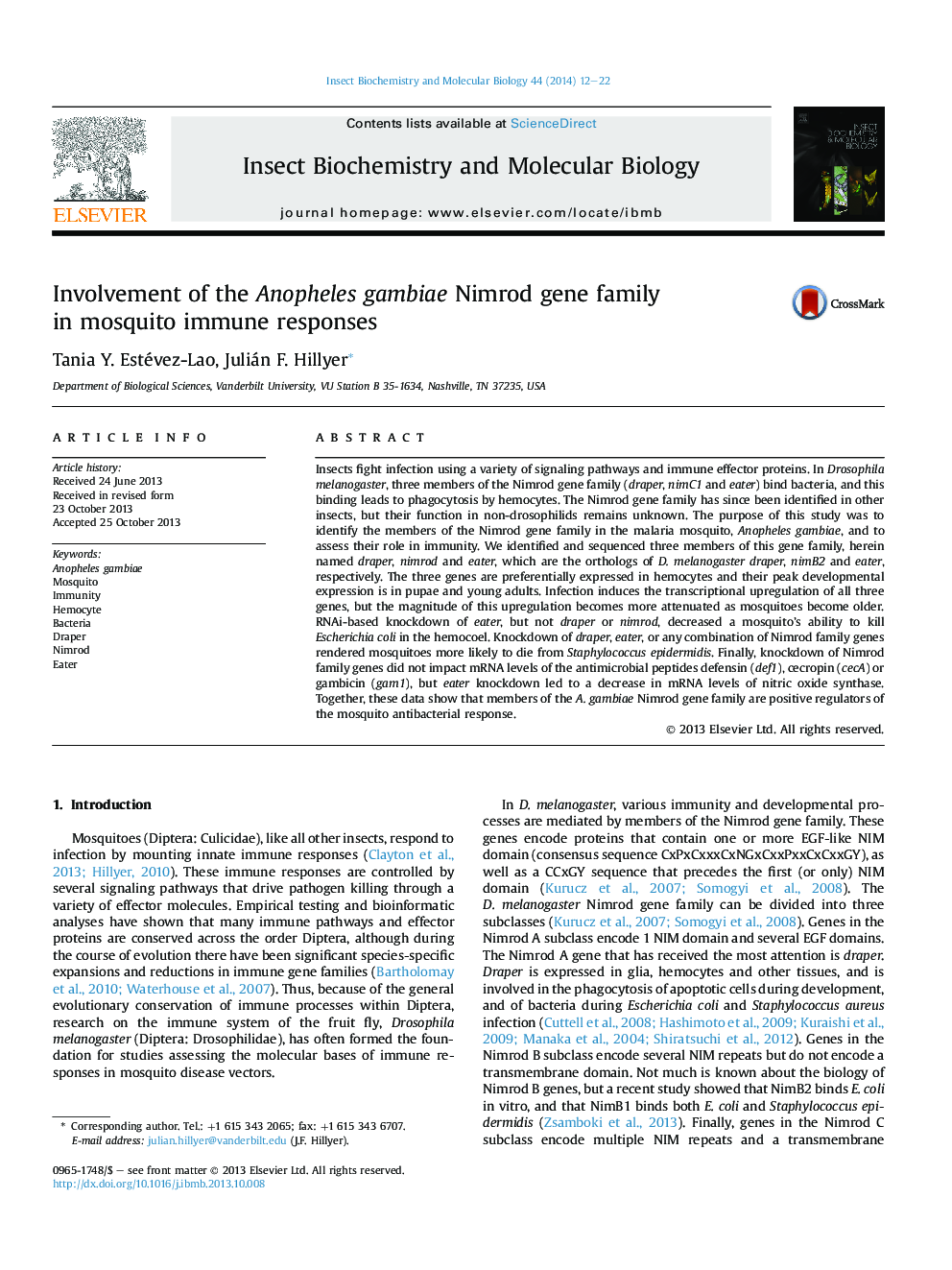| کد مقاله | کد نشریه | سال انتشار | مقاله انگلیسی | نسخه تمام متن |
|---|---|---|---|---|
| 1982101 | 1539508 | 2014 | 11 صفحه PDF | دانلود رایگان |

• Characterization of members of the Nimrod gene family in the mosquito, Anopheles gambiae.
• Draper, nimrod and eater are preferentially transcribed in hemocytes, and peak expression occurs around eclosion.
• Draper, nimrod and eater are transcriptionally upregulated following a bacterial infection.
• Eater is involved in the killing of E. coli, and Eater and Draper protect mosquitoes from Staphylococcus epidermidis.
• Knockdown of eater reduces the infection-induced transcriptional upregulation of nitric oxide synthase.
Insects fight infection using a variety of signaling pathways and immune effector proteins. In Drosophila melanogaster, three members of the Nimrod gene family (draper, nimC1 and eater) bind bacteria, and this binding leads to phagocytosis by hemocytes. The Nimrod gene family has since been identified in other insects, but their function in non-drosophilids remains unknown. The purpose of this study was to identify the members of the Nimrod gene family in the malaria mosquito, Anopheles gambiae, and to assess their role in immunity. We identified and sequenced three members of this gene family, herein named draper, nimrod and eater, which are the orthologs of D. melanogaster draper, nimB2 and eater, respectively. The three genes are preferentially expressed in hemocytes and their peak developmental expression is in pupae and young adults. Infection induces the transcriptional upregulation of all three genes, but the magnitude of this upregulation becomes more attenuated as mosquitoes become older. RNAi-based knockdown of eater, but not draper or nimrod, decreased a mosquito's ability to kill Escherichia coli in the hemocoel. Knockdown of draper, eater, or any combination of Nimrod family genes rendered mosquitoes more likely to die from Staphylococcus epidermidis. Finally, knockdown of Nimrod family genes did not impact mRNA levels of the antimicrobial peptides defensin (def1), cecropin (cecA) or gambicin (gam1), but eater knockdown led to a decrease in mRNA levels of nitric oxide synthase. Together, these data show that members of the A. gambiae Nimrod gene family are positive regulators of the mosquito antibacterial response.
Figure optionsDownload high-quality image (185 K)Download as PowerPoint slide
Journal: Insect Biochemistry and Molecular Biology - Volume 44, January 2014, Pages 12–22